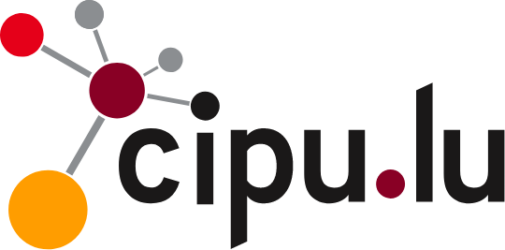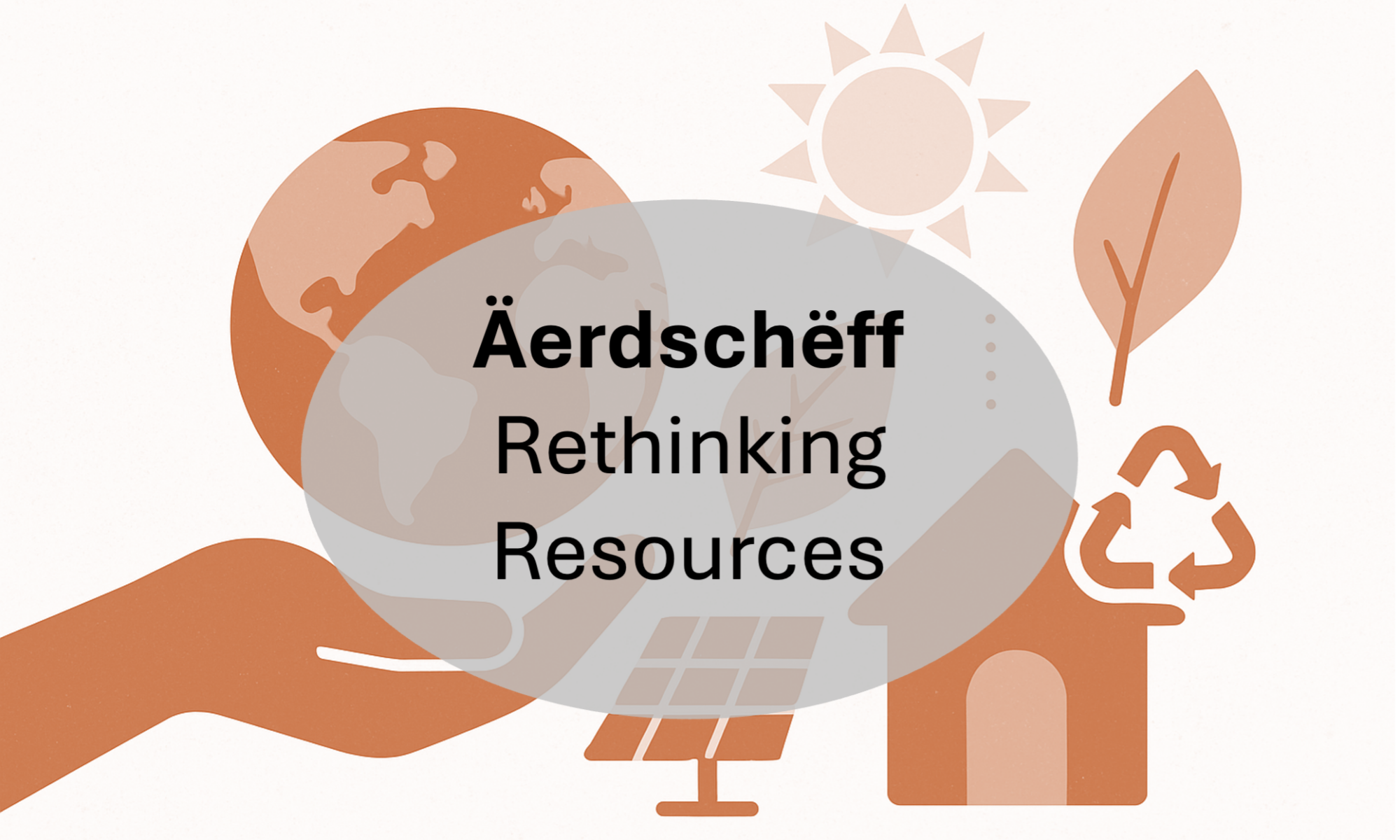Most mornings at home start in the same way: a flip of the light switch, a shower and a cup of coffee. These actions usually happen on autopilot mode – especially in the early hours of the day. What if we stopped for a moment and think about the resources behind them? Where did the water come from, I just used to wash my face? How was the energy produced to wake me up with light and coffee? In one place in Luxembourg, these everyday actions come with built-in awareness. Welcome to the Äerdschëff.
What is the Äerdschëff?
Äerdschëff is the Luxembourgish translation of Earthship. This concept developed in the 1970s with the work of American architect Mike Reynolds, who was working on self-sufficient dwellings from natural and recycled materials in the desert climate of New Mexico. They aimed to meet human needs for water, energy, heating and cooling, and food production, all within a closed-loop, low-tech system. In Luxembourg, this concept has been reinterpreted for the local context: humid climate, limited sunlight and cold winters.

Located in Redange-sur-Attert, in northwestern Luxembourg, the Äerdschëff is a publicly owned building and demonstration site that puts sustainable construction and living into practice. Based on the principle off-grid third space – low tech solutions – circular design it functions as a space for hands-on learning, experimentation and exchange. The project invites people of all ages and backgrounds to engage with resource-conscious practices – from ecological building and energy autonomy to water systems and permaculture. It also serves as a prototype for institutionalising low-tech thinking – showing how practical solutions can be scaled through public standards, shared infrastructures, and community-based governance.
Background
The Äerdschëff was developed in three phases: the design phase (2014–2017), the construction phase (2019–2022), and the current operations phase (since 2023). It began as a citizen-led initiative and grew through partnerships with public institutions and civil society.

Initial funding from LEADER, an EU programme supporting rural development through local initiatives, supported the formation of a steering group, design development, and training at the Earthship Academy in New Mexico. Additional support came from the Œuvre nationale de Secours Grande-Duchesse Charlotte and Luxembourg’s Ministry for Environment, Climate and Sustainable Development. The Atert Lycée Redange offered a public site for the building.
From 2016 to 2019, the team adapted the concept to local needs and sourced reclaimed materials. Construction began in 2019 with a summer building camp and continued with help from local volunteers and companies. By 2020, the team launched science-based educational activities, supported by the PSP-Flagship programme (Promoting Science to the Public) of the National Research Fund for education on circular design for teenagers and later by the Losch Foundation for the technical programme and mentoring of young people. The project continues to receive support from the Ministry for Environment, Climate and Sustainable Development and the Ministry for Education.
The building
Constructed with natural and reclaimed material such as earth, wood and tyres, the Äerdschëff building shows how local resources and circular thinking can shape architectural design. Its thick earthen walls, built using compacted tyres as a structural base, help regulate indoor temperatures and provide natural insulation without the need for conventional heating or cooling. Rainwater is harvested from the roof, filtered, and reused throughout the building. Electricity comes from solar panels, and waste is treated on-site through composting toilets and greywater systems.

Beyond its construction, the Äerdschëff’s architecture is also used as a tool for systemic literacy: every element – from the earthen walls to the solar roofs – helps to make visible how energy, water, and material flows are interconnected. Visitors are encouraged to not only to experience sustainable techniques, but also to understand how closed loops and interdependencies can be designed.
The Äerdschëff is more than a building though; it is a place for learning, experimenting, and community-building. As a third space between everyday life and formal education, it welcomes visitors of all ages and backgrounds to explore sustainable living practices.

Volunteers have the opportunity to work alongside the core team for several months, learning about low-tech solutions, sustainability, and circular design through practical tasks and workshops. School classes and youth groups can visit the site to participate in guided educational activities, focusing on ecological construction, renewable energy systems, permaculture, and responsible water and waste management. The project also hosts exhibitions, concerts, creative weeks, and public events to encourage broader community engagement.
Beyond education, the Äerdschëff functions as a testing ground for low-tech and circular innovations. The team experiments with sustainable construction methods, resource management strategies, and participatory governance models, aiming to generate practical, transferable knowledge.

Outlook
The Äerdschëff highlights the potential of shared infrastructures, collective resilience, and common resource management as key elements of a sustainable future. By combining circularity, low-tech innovation, and community engagement, it demonstrates how sustainable ways of living can not only be tested and implemented but also serve as an instrument for education. It emphasises how intercultural learning can facilitate the transfer and adaptation of innovative approaches to different local contexts.
Looking beyond its scale, the Äerdschëff offers insights that could inform wider planning approaches. The use of local resources, the shortening of supply chains and the creation of community-oriented infrastructure could support the vision of decentralised urban development – shaping places where everyday needs are within short distances and where communities are more closely connected to their environment. The experiences gathered at the Äerdschëff also underline that scaling up low-tech innovation requires public support structures – including open standards, incentives for reuse, and participatory approaches to infrastructure planning.
Even at a fundamental level, it highlights that everyday actions – such as switching a light or turning on a tap – are part of larger systems, and that small changes in thinking can lead to new ways of living.
Contact:
Äerdschëff: tarik@aerdscheff.lu
References and further information
Äerdschëff (English, French, German): https://aerdscheff.lu/
Luxembourg National Research Fund – PSP Flagship (English): https://www.fnr.lu/funding-instruments/psp-flagship/

